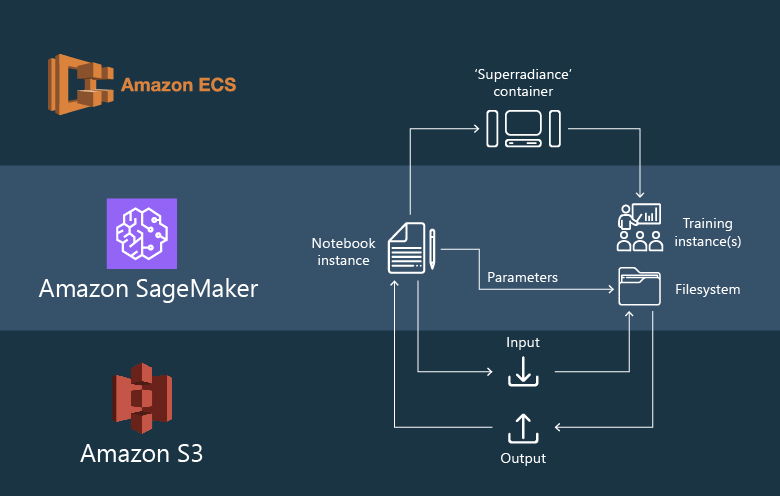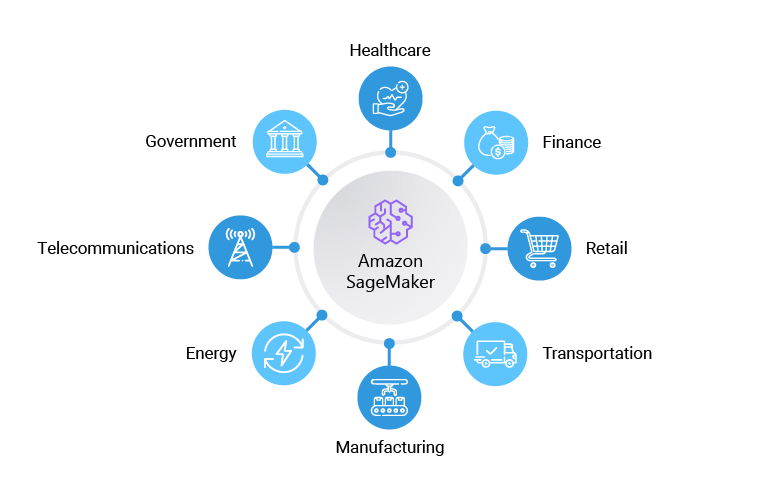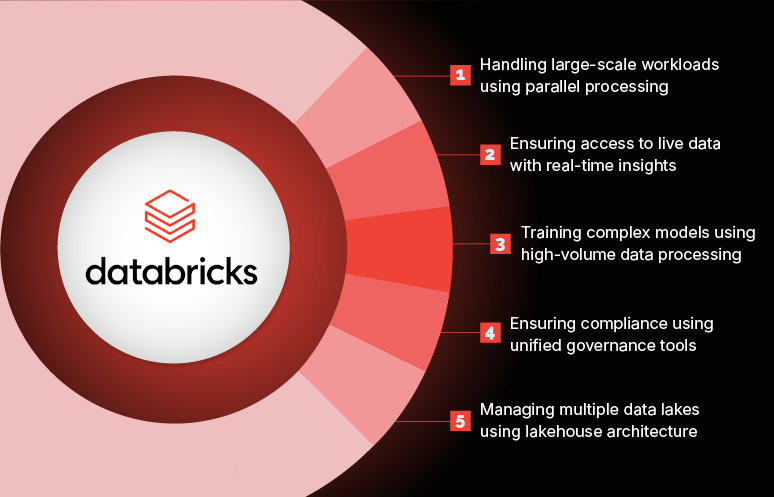Scaling up a business requires innovation, and one area is experiencing rapid growth: machine learning (ML). Research shows that the global machine learning industry will reach a whopping $20.83 billion in 2024, surging at a CAGR of 44.06% from 2017 to 2024. One of the reasons machine learning is growing at such a tremendous rate is Amazon SageMaker.
Machine learning has a wide range of applications. And to explore this in a detailed manner, Amazon Web Services (AWS) offers many tools, and one such service that we will talk about in this guide is Amazon SageMaker.
What is Amazon SageMaker and how does it work?
Amazon SageMaker is a fully managed machine learning platform provided by AWS. By using it, data scientists, developers, and machine learning experts can build machine learning models, train them and deploy them at scale. Furthermore, it offers a cloud-based environment for model development, training, and deployment, abstracting away most of the infrastructure maintenance and allowing users to focus on building and deploying models.

To use SageMaker, a user first uploads their data to AWS S3 (Amazon Simple Storage Service) or the SageMaker instance. Then, using either the Jupyter notebook or the IDE, the user can develop and train their model based on the provided algorithms or their custom code. After the model is trained, it can be deployed to production, where it can be accessed and utilized for making predictions via APIs or batch processing.
Overall, SageMaker provides a comprehensive and scalable platform for machine learning that helps organizations reduce the time and effort required to develop, train and deploy machine learning models.
Features Of Amazon SageMaker
Amazon SageMaker is a cloud-based platform for building, training, and deploying machine learning models. Some of its key features and capabilities are:
1. Model training: SageMaker provides pre-built algorithms and tools to train machine learning models using a variety of popular frameworks such as TensorFlow, PyTorch, and MXNet.
2. Hyperparameter tuning: SageMaker automates the process of finding the best hyperparameters for a given machine learning model, which can improve the accuracy of the model.
3. Model deployment: SageMaker makes it easy to deploy trained models in a variety of environments, including on-premises, in the cloud, or on edge devices.
4. End-to-end workflows: SageMaker provides an end-to-end workflow to help simplify the process of building, training, and deploying machine learning models. This helps in reducing the time and effort required to bring models to market.
5. AutoML: SageMaker provides automated machine learning capabilities to make it easier for data scientists and developers with limited machine learning experience to build high-quality models.
6. Jupyter notebooks: SageMaker includes Jupyter Notebooks, a popular tool for data analysis and visualization, which makes it easy to explore and analyze data, and to train machine learning models.
7. Collaboration and sharing: SageMaker provides tools for sharing and collaborating on machine learning models with other data scientists and engineers, making it easier to work together on projects.
8. Monitoring and debugging: SageMaker provides tools to monitor and debug machine learning models in production, making it easier to identify and resolve issues quickly.
How does SageMaker compare to other machine learning platforms and tools?
SageMaker is a managed machine learning platform provided by AWS, which makes it different from other machine learning platforms and tools. Some key differences between SageMaker and other platforms and tools include:
1. Managed services: SageMaker is a fully managed service, meaning that AWS handles the infrastructure and maintenance of the platform. This enables users to be free from having to manage servers’ storage, and other resources.
2. Integration with AWS services: SageMaker integrates seamlessly with other AWS services such as S3 for data storage, EC2 for compute resources, and Lambda for deploying models as serverless functions.
3. Ease of use: SageMaker provides a simple, user-friendly interface for developing and deploying machine learning models, including Jupyter notebooks and an integrated development environment (IDE).
4. Scalability: SageMaker is highly scalable and can handle large-scale training and deployment of machine learning models, making it suitable for enterprises with big data requirements.
Compared to other machine learning platforms and tools like TensorFlow, PyTorch, and scikit-learn, SageMaker offers a more inclusive, integrated solution for machine learning, with a focus on ease of use and scalability. However, for users who prefer to work with other platforms and tools, SageMaker also provides integration with these tools. This allows for a hybrid approach that leverages the strengths of both. On top of it, AWS SageMaker improves the efficiency of machine learning models in a significant manner.
Ultimately, the choice between SageMaker and other platforms and tools will depend on the specific needs and preferences of the user and the organization.
Benefits of Amazon SageMaker
Amazon SageMaker is a cloud-based platform for building, training, and deploying machine learning models. It offers several benefits:
1. Cost savings: Using SageMaker can help reduce the cost of building and deploying machine learning models compared to setting up and maintaining on-premises infrastructure.
2. Time-to-market improvements: The tool provides pre-built algorithms and tools to simplify the process of training, tuning, and deploying machine learning models, thus reducing the time it takes to bring models to market.
3. Scalability: SageMaker can automatically scale up or down the resources required to train and deploy models, making it easier to handle large amounts of data. Scalability is one of the major benefits of Amazon SageMaker.
4. Access to powerful hardware: Gain access to powerful GPU and CPU instances to train models, which can improve the quality and accuracy of models.
5. Integration with other AWS services: You can integrate it with other AWS services such as S3, Lambda, and EC2, providing a seamless experience for building and deploying machine learning models in the AWS ecosystem.

Top 10 Benefits of Amazon SageMaker for Machine Learning
Amazon SageMaker: optimal for ML training. Advantages: scalability, ease of use, cost efficiency. Custom models enhance competitiveness.
How can your business utilize Amazon SageMaker?
Amazon SageMaker is a cloud-based machine learning platform that can be used to enhance various aspects of a business. And there are times when businesses need AWS cloud consulting services to accelerate the cloud strategy. Here are a few ways that you can use Amazon SageMaker for your business:
1. Predictive modeling: Use SageMaker’s algorithms to build predictive models that can be used to make data-driven decisions in areas such as customer behavior, sales forecasting and supply chain optimization.
2. Customer segmentation: Analyze customer data to identify patterns and create segments for targeted marketing and personalization.
3. Fraud detection: Use machine learning models to detect and prevent fraudulent transactions in real time.
4. Image recognition: Train and deploy computer vision models for use cases such as product categorization, image-based searches, and quality control.
These are just a few examples of how Amazon SageMaker can be used to drive business value. It can be tailored to meet specific business needs and used in a variety of industries.
Use cases for Amazon SageMaker for different industries
Use cases for Amazon SageMaker can be applied to industries, including:
1. Healthcare: Predictive maintenance and patient risk analysis to improve patient outcomes.
2. Finance: Fraud detection, credit risk analysis and algorithmic trading.
3. Retail: Recommendation systems, inventory management and customer segmentation.
4. Transportation: Predictive maintenance and optimization of logistics networks.
5. Manufacturing: Quality control and predictive maintenance.
6. Energy: Predictive maintenance and optimization of energy production and distribution.
7. Telecommunications: Network optimization and customer churn prediction.
8. Government: Predictive maintenance of public infrastructure and fraud detection in social programs.
SageMaker’s built-in algorithms, support for custom algorithms, and APIs for model training and deployment make it a versatile tool for various industries and use cases.
See how Softweb Solutions helped a leading pharma company and other industry giants handle operational challenges and achieve excellence:
Softweb ensured efficient packaging with Amazon SageMaker
Our client, a pharmaceutical company, struggled adhering to strict industry packaging standards. Softweb Solutions developed an ML model by combining AI and video analytics. We leveraged Amazon SageMaker to enhance defect detection in packaging. The model accurately detects inadequacies and enables the client to analyze and improve packaging and quality assurance processes.
- Increased defect detection rate
- Early identification of packaging issues
- Reduced drug rejection rate
- Optimized labor costs
- Streamlined quality assurance system
- Improved brand reputation
Amazon SageMaker – Refining machine learning development with ease
In summary, Amazon SageMaker supports ML applications from model creation to execution. Moreover, its robust development also makes it even more efficient. The challenges and requirements in the field of ML are constant and the need for an ideal solution will always be there.
Based on that need, Softweb Solutions delivers Amazon SageMaker services to streamline your machine learning requirements. Get in touch with our consultants to have a clear picture of your business.




